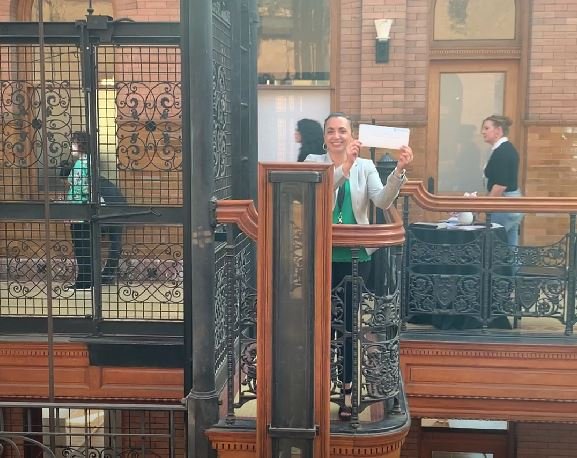Imagining What Life Will Become: Key Takeaways from a Workshop on Future Visioning
Second of a Two-part Article on Imagining What Life Will Become
Image credits: PopTika via Shutterstock.
Recently, I had the good fortune to attend What Will Life Become?, a 2-day workshop hosted by the Berggruen Institute and the USC Dornsife Center on Science, Technology, and Public Life. The workshop was a fascinating blend of academic theory, tech-interrogating art, and future visioning.
In the public forum, I joined Dr. Lisa Ruth Rand (a historian of science, technology, and the environment) and K Allado-McDowell (a writer, speaker, and musician) to attempt to answer the question that inspired the entire event: What Will Life Become? Under the skillful probing of Dr. Claire Isabel Webb of the Berggruen Institute, we considered the definition of “human” (and whether we want to be labeled that way!) and the connections among species—including AI.
And no, we didn’t come up with a definitive answer! Instead, we framed a whole host of uncomfortable questions, like:
💡 How do we recognize “intelligence”? Where are our blind spots?
💡 Do we need to revisit our definitions of “human”?
💡 How will future generations view us, as we are in 2022?
💡 Once humans move beyond Earth, how will we conceptualize ourselves? Will we become separate post-”human” species?
💡 What other “ways of being” arise when we expand our definition of intelligence, or even life itself?
That evening, I joined a private dinner with members of the Berggruen, the Dornsife Center, and the artists who would be unveiling their installations the next day. I sat with a filmmaker, a philanthropist, and a voice-tech new media artist. Not my usual crowd! But it was a fantastic opportunity to explore how our educational journeys and our passions inform our visions of the future.
Sougwen Chung, who collaboratively paints with robots.
Day 2 of the workshop featured a three-part salon: Futures of Life, Futures of Mind, and Futures in Outer Space. Provocation followed provocation in each panel. How do we balance acknowledging the harmful events of the past with today’s urgent need to act, which is fueled by powerful technologies without precedent? I feel strongly about the benefits of experimenting with transparency and deep humility … but there were profound reservations—even fears—about what life could become if we move forward without adequate intention in philosophy and governance.
Finally, we directly experienced the expansion of human possibility by blending tech and humans through world premieres of art. I was particularly taken by the work of Sougwen Chung, who collaboratively paints with robots, and of Harry Yeff (as REEPS 100), who reformulates human vocalization with AI. And I loved the playfulness of Nancy Baker Cahill’s 5-story-tall XR corpus that revealed unseen and unheard connections in the lobby of the Bradbury building (of Blade Runner fame).
Here are my main takeaways from What Will Life Become?
💡 Technology is not about replacing humans, but about empowering us to return to the most human aspects of our work, art, and daily lives.
💡 As we build the future, we must engage with deeply uncomfortable questions and divergent viewpoints.
💡 We are catching only the barest glimpses of what is possible—and yet the mindsets and actions that we adopt today will have powerful effects far into the future.
I mailed a letter to my son, which he will receive in 2046.
Before I left the workshop, I mailed a letter to the future. In 2046, my son will learn (either digitally or via old-timey snail mail!) my plans and my visions for the future that he will inhabit. I have no doubt that I will turn out to be wrong about many things. But I’m confident that he’ll connect with the fundamental hopefulness of future thinking—because he’ll be building an even newer future.
About Tiffany
Dr. Tiffany Vora speaks, writes, and advises on how to harness technology to build the best possible future(s). She is an expert in biotech, health, & innovation.
For a full list of topics and collaboration opportunities, visit Tiffany’s Work Together webpage.
Get bio-inspiration and future-focused insights straight to your inbox by subscribing to her newsletter, Be Voracious. And be sure to follow Tiffany on LinkedIn, Instagram, Youtube, and X for conversations on building a better future.
Donate = Impact
If this article sparked curiosity, inspired reflection, or made you smile, consider buying Tiffany a cup of coffee!
Your support will:
Spread your positive impact around the world
Empower Tiffany to protect time for impact-focused projects
Support her travel for pro bono events with students & nonprofits
Purchase carbon offsets for her travel
Create a legacy of sustainability with like-minded changemakers!
Join Tiffany on her mission by contributing through her Buy Me a Coffee page.




